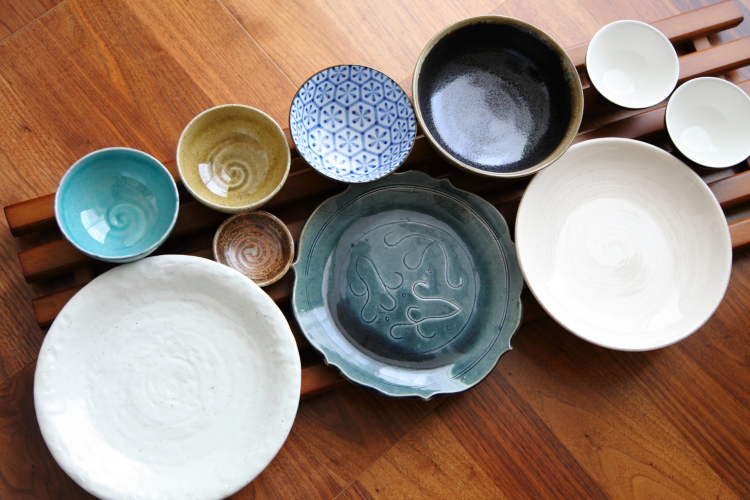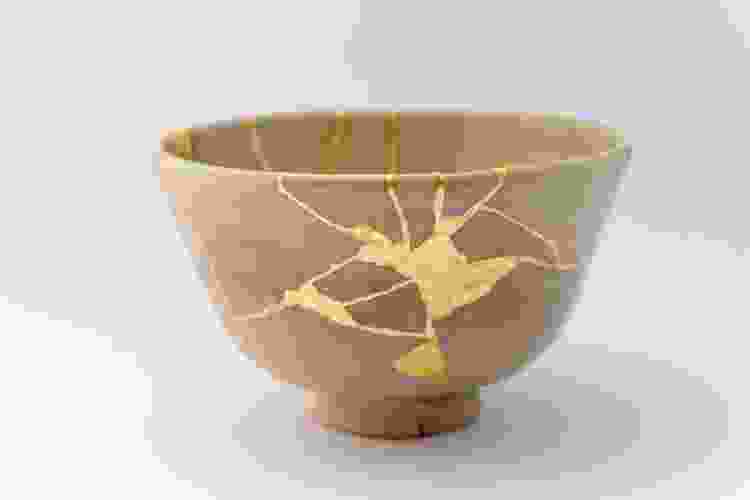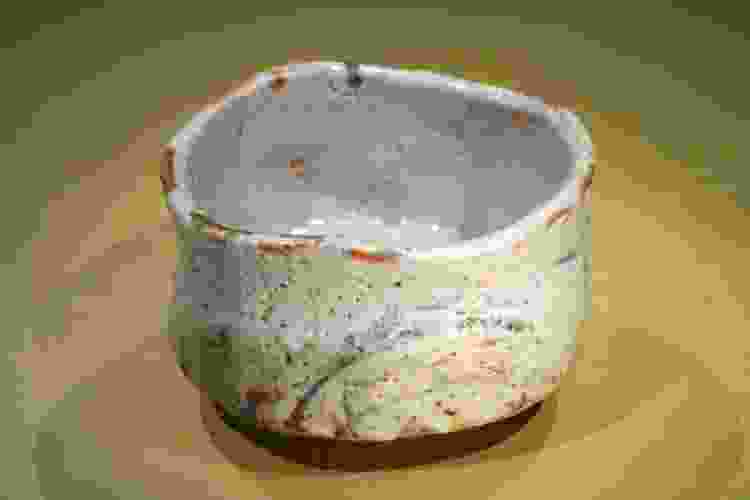Everything You Need to Know About Japanese Pottery in 2025

Japanese pottery is an ancient practice that continues in modern times. It’s a functional art form that has surprisingly high-class beginnings and inspires artists today. Whether you’re a seasoned collector, a pottery fan or just someone curious about Japanese culture, we’ve got everything you need to know about the timeless art of Japanese ceramics.
Jump to Section
- Japanese Pottery History
- Japanese Pottery Types
- Fun Facts About Japanese Pottery
- Japanese Pottery FAQs
Japanese Pottery History
Learn Japanese Pottery Hands-On

The history of Japanese pottery is long and fascinating. The first instances of pottery production can be traced all the way back to 10,500 BCE. This means that Japanese pottery tells the story, not just of art, but of the people of Japan.
Below is a brief timeline of pottery making in Japan. However, before we get into that, if you’re interested in pottery making or learning to make pottery for beginners, check out pottery classes. There are classes everywhere, including pottery classes in the Bay Area, pottery classes in Houston and pottery classes in San Diego.
Kutani Pottery (17th Century)
Originated in Ishikawa Prefecture during the Edo period. Early production (Ko-Kutani) showcased bold five-color designs but ceased after 50 years. Revived in the 19th century (Saiko-Kutani), introducing new techniques and styles.
Mino Pottery (Momoyama Period, 1573–1603)
Evolved in Gifu Prefecture during the rise of tea ceremonies. Innovations included styles like Shino and Oribe, which introduced new glazing techniques and aesthetic diversity.
Arita Pottery (Circa 1616)
The discovery of porcelain clay in Saga Prefecture during the early Edo period marked the beginning of Japanese porcelain. Initially modest, designs became intricate and colorful in the mid-17th century, fueling exports to Europe.
Bizen Pottery (Heian Period, 794–1185)

Developed in Okayama Prefecture over 1,000 years ago. Became widely popular during the Momoyama period due to its durability and unglazed, wood-fired designs, which reflected advancements in kiln technology.
Hasami Pottery (Early 17th Century)
Began in Nagasaki Prefecture during the Edo period. Innovations included modular designs for stackable and functional wares, combining practicality with aesthetic refinement.
Shigaraki Pottery (Kamakura Period, 1185–1333)
Emerged in Shiga Prefecture as part of Japan’s Six Ancient Kilns. Advanced techniques for large-scale pottery production, including tiles and braziers, supported its use in tea ceremonies during the late 16th century.
Seto Pottery (5th Century)
One of the Six Ancient Kilns, originating in Aichi Prefecture. By the late 10th century, Seto potters adopted Chinese techniques, leading to innovations in glazing and production methods that influenced Japanese pottery as a whole.
Japanese Pottery Types
It’s important to understand that there are many different types of Japanese pottery, ranging from ancient Japanese pottery to traditional Japanese pottery to modern Japanese pottery.
1. Wabi Sabi Pottery

Ask any Japanese pottery expert, “What is Wabi Sabi pottery?” or “What is Kintsugi pottery?” and you’re going to get a complex answer. Well, they’re the same thing. Wabi Sabi is the more Westernized word for Kintsugi pottery.
This is more of a pottery method rather than a standard type of pottery. In this method, cracked ceramics are glued together, filling any chips with red lacquer. The visible red lacquer is dusted with gold powder, and the result is a visibly repaired, yet beautiful, piece of pottery.
If you ever hear or read about Japanese pottery gold, it's a reference to Wabi Sabi pottery. These pieces with valuable pottery marks are potentially worth a lot of money.
2. Kutani Pottery
Kutani ware or “Kutani-yaki” originates from Ishikawa Prefecture, which is a seacoast region on the East Sea. This pottery was developed in the 17th century and is celebrated for its bright colors and intricate patterns.
This style showcased the classical "Gosai-de" or five-color palette. Production halted after 50 years but saw a revival a century later as Saiko-Kutani, bringing new styles ranging from subdued tones to opulent red and gold designs.
3. Bizen Pottery
Bizen pottery is rooted in Okayama Prefecture, and is one of Japan's oldest pottery styles, with over 1,000 years of history. Known for its raw, unglazed finish and earthy appeal, Bizen ware is crafted using a wood-fired kiln process that can last 10–14 days.
The unique textures, ash glazes and natural kiln markings result from this intensive firing process. According to The Met Museum, this pottery style gained prominence during the Momoyama period, particularly among samurais and tea ceremony enthusiasts.
4. Arita Pottery
This type of pottery is the pioneering style of Japanese porcelain. Its history dates back to 1616 when porcelain clay was first discovered in Arita (a gorgeous town in western Japan). Initially modest in design, Arita pottery was transformed in 1647 by the use of bright colors and intricate patterns.
Characterized by its pure white base and vivid motifs, often featuring indigo blue and red, Arita pottery was exported to Europe through the port of Imari, earning the alternative name Imari-yaki. Despite its delicate appearance, Arita pottery is actually incredibly durable.
5. Mino Pottery

Mino pottery has a history stretching over 1,300 years. During the Momoyama period, Mino pottery flourished alongside the rise of the Japanese tea ceremony.
This versatile style is renowned for its diverse range of techniques and aesthetics, with iconic styles such as Setoguro (black Seto), Shino (white glaze with pinholes), Oribe (green copper glaze and bold patterns) and Yellow Seto.
6. Hasami Pottery
Hasami pottery comes from the charming town of Hasami in Nagasaki Prefecture. With a history dating back to the early 17th century, Hasami ware is renowned for its clean lines, earthy tones and minimalist aesthetic.
The local clay gives Hasami pottery a unique texture and durability, while the matte glaze enhances its understated elegance. What sets Hasami ware apart is its modular design, meaning pieces can be easily stacked and mixed.
7. Shigaraki Pottery
Shigaraki pottery is a distinctive style of stoneware pottery from Koka, Shiga Prefecture. It’s known for its rough texture, substantial weight and excellent heat resistance.
Shigaraki pottery has been used to craft large items such as tiles, braziers and clay pots. It is also famous for its whimsical Tanuki (raccoon dog) figurines, found throughout Japan.
8. Seto Pottery
This is one of Japan’s most iconic pottery styles. So influential is this pottery that the term Seto-mono has become synonymous with Japanese ceramics. Seto pottery origins date back to the 5th century, but it wasn’t until the late 10th century that it gained prominence.
As one of Japan’s Six Ancient Kilns, Seto pottery reflects centuries of innovation and artistry. Known for its adaptability and beauty, Seto ware has left an indelible mark on Japan’s ceramic legacy.
9. Raku Pottery

Japanese Raku pottery originated in Kyoto during the late 16th century and is deeply tied to the Japanese tea ceremony (like many of the Japanese pottery types).
Created by the potter Chojiro under the guidance of tea master Sen no Rikyu, Raku pottery embodies the philosophy of Wabi Sabi, celebrating simplicity and natural beauty.
Unlike other pottery styles, Raku is made by hand building pottery and firing at low temperatures, creating unique textures and unpredictable crackles through rapid cooling techniques.
Known primarily for its tea bowls (chawan), Raku ware became a symbol of harmony and individuality. The name “Raku,” meaning “ease” or “enjoyment,” was bestowed upon Chojiro’s descendants by warlord Toyotomi Hideyoshi, cementing its place in Japanese cultural history.
Fun Facts About Japanese Pottery
-
Japanese pottery has a history stretching back over 10,000 years, making it one of the oldest pottery traditions in the world.
-
Japan's "Six Ancient Kilns" (Seto, Shigaraki, Bizen, Tamba, Echizen, and Tokoname) represent the most historically significant pottery centers, each known for unique styles and techniques.
-
Bizen pottery’s signature look comes from a wood-firing process that can take 10 to 14 days, producing natural ash glazes and unique kiln markings.
-
In the 17th century, Arita pottery was exported to Europe through the port of Imari, where it became highly sought after and influenced European porcelain styles.
-
Shigaraki is well-known for its ceramic tanuki (raccoon dog) figurines, which are believed to bring good fortune and can be found across Japan.
-
Mino pottery styles were designed to cater specifically to the aesthetics of the Japanese tea ceremony during the Momoyama period.
-
Kutani ware’s Gosai-de (five-color) designs are famous for their vibrant hues of red, green, yellow, purple and blue, making them some of the most colorful pottery in Japan.
-
Japanese pottery was almost lost forever after World War II when the popularity of traditional Japanese ceramics plummeted in a single generation. Japanese philosopher, Yanagi Soetsu, championed the art form across the country and helped bring it back.
-
The term “Seto-mono” (Seto things) became a generic term for all pottery in Japan due to Seto’s influence as a leading ceramics center.
Japanese Pottery FAQs
What Is Japanese Pottery Called?
Japanese pottery is commonly referred to as Yakimono, which translates to "fired things," or tojiki, meaning "ceramics." Specific styles of pottery are often named after their region of origin, such as Arita-yaki (Arita pottery) or Bizen-yaki (Bizen pottery).
What Is the Most Popular Japanese Pottery?
While popularity depends on individual preferences, some of the most renowned Japanese pottery styles include Arita pottery for its exquisite porcelain, Bizen pottery for its earthy, unglazed textures and Raku pottery for its unique connection to the tea ceremony.
A well-cared-for piece of Japanese pottery can sell for hundreds of thousands of dollars but (if you’re lucky) you may be able to find a piece at your local thrift store or flea market.
Japanese pottery is a timeless art form that bridges tradition and innovation, from the vibrant colors of Kutani to the rustic simplicity of Bizen. Each style tells its own story, shaped by the region and period in which it was born.
To learn even more, check out other experiences happening on Classpop!


